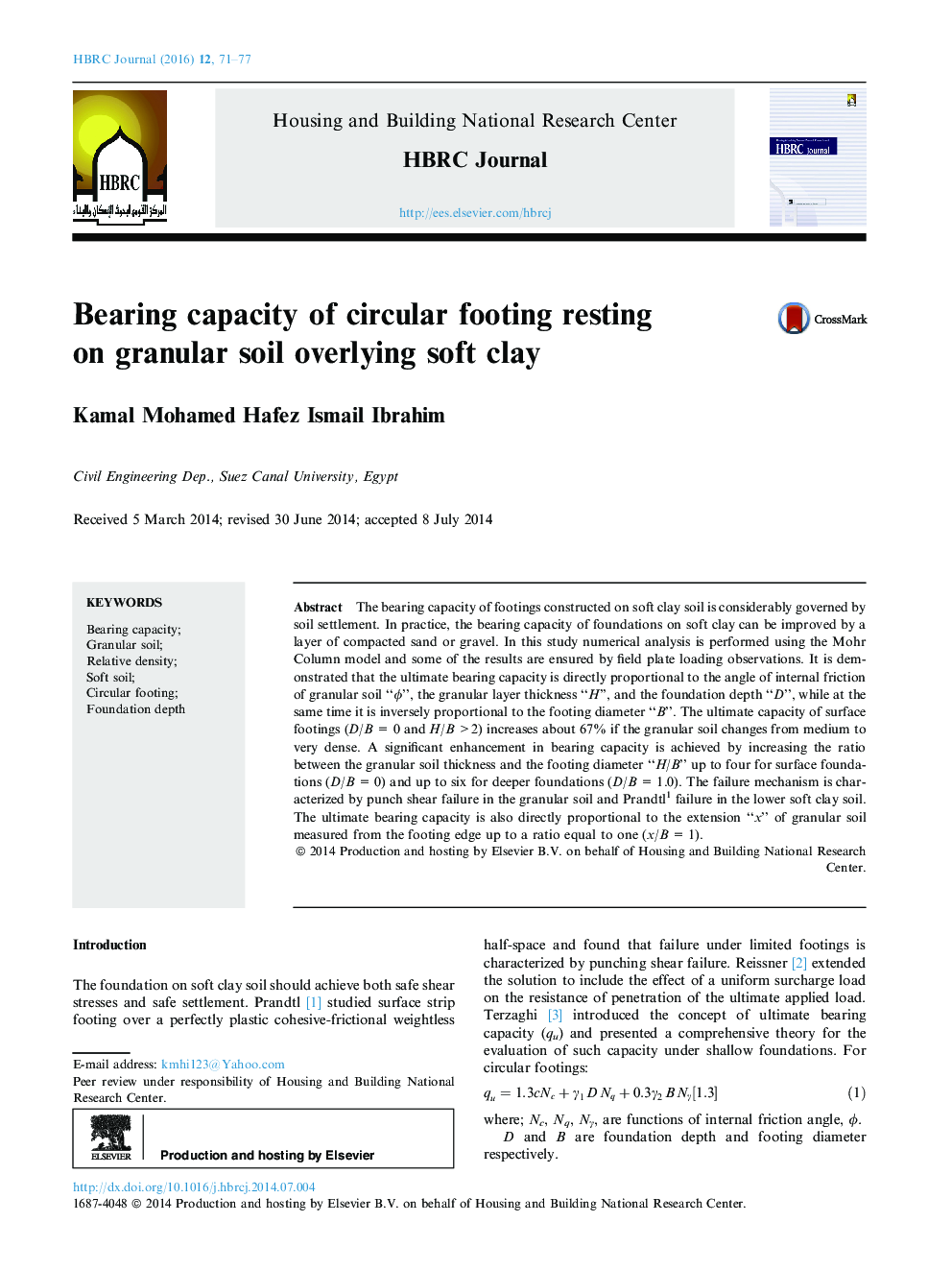| Article ID | Journal | Published Year | Pages | File Type |
|---|---|---|---|---|
| 274603 | HBRC Journal | 2016 | 7 Pages |
The bearing capacity of footings constructed on soft clay soil is considerably governed by soil settlement. In practice, the bearing capacity of foundations on soft clay can be improved by a layer of compacted sand or gravel. In this study numerical analysis is performed using the Mohr Column model and some of the results are ensured by field plate loading observations. It is demonstrated that the ultimate bearing capacity is directly proportional to the angle of internal friction of granular soil “ϕ”, the granular layer thickness “H”, and the foundation depth “D”, while at the same time it is inversely proportional to the footing diameter “B”. The ultimate capacity of surface footings (D/B = 0 and H/B >2) increases about 67% if the granular soil changes from medium to very dense. A significant enhancement in bearing capacity is achieved by increasing the ratio between the granular soil thickness and the footing diameter “H/B” up to four for surface foundations (D/B = 0) and up to six for deeper foundations (D/B = 1.0). The failure mechanism is characterized by punch shear failure in the granular soil and Prandtl1 failure in the lower soft clay soil. The ultimate bearing capacity is also directly proportional to the extension “x” of granular soil measured from the footing edge up to a ratio equal to one (x/B = 1).
